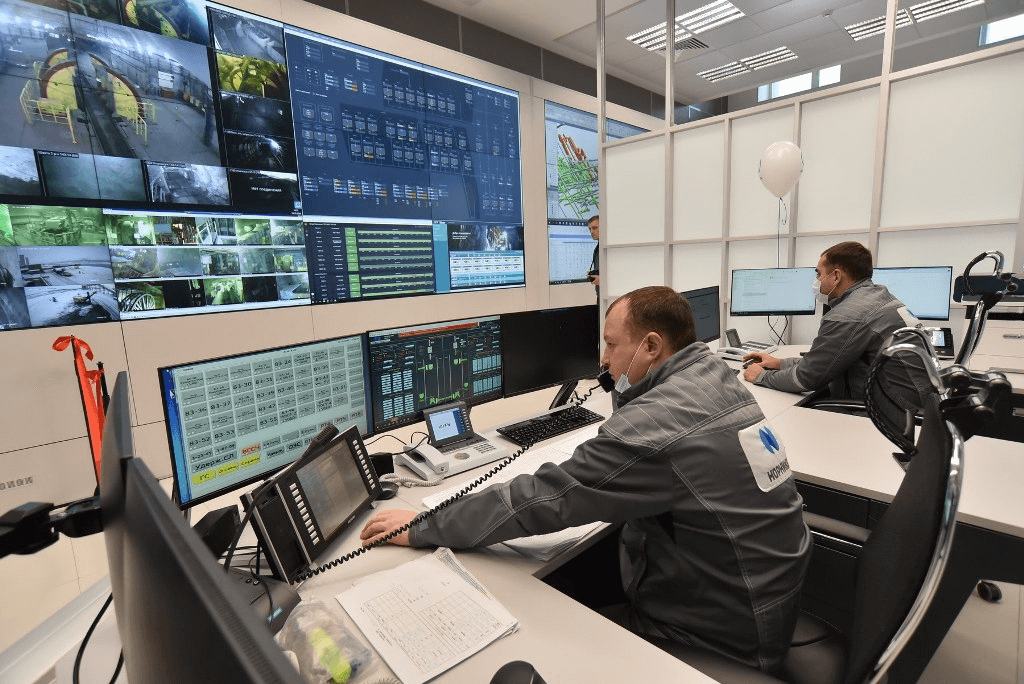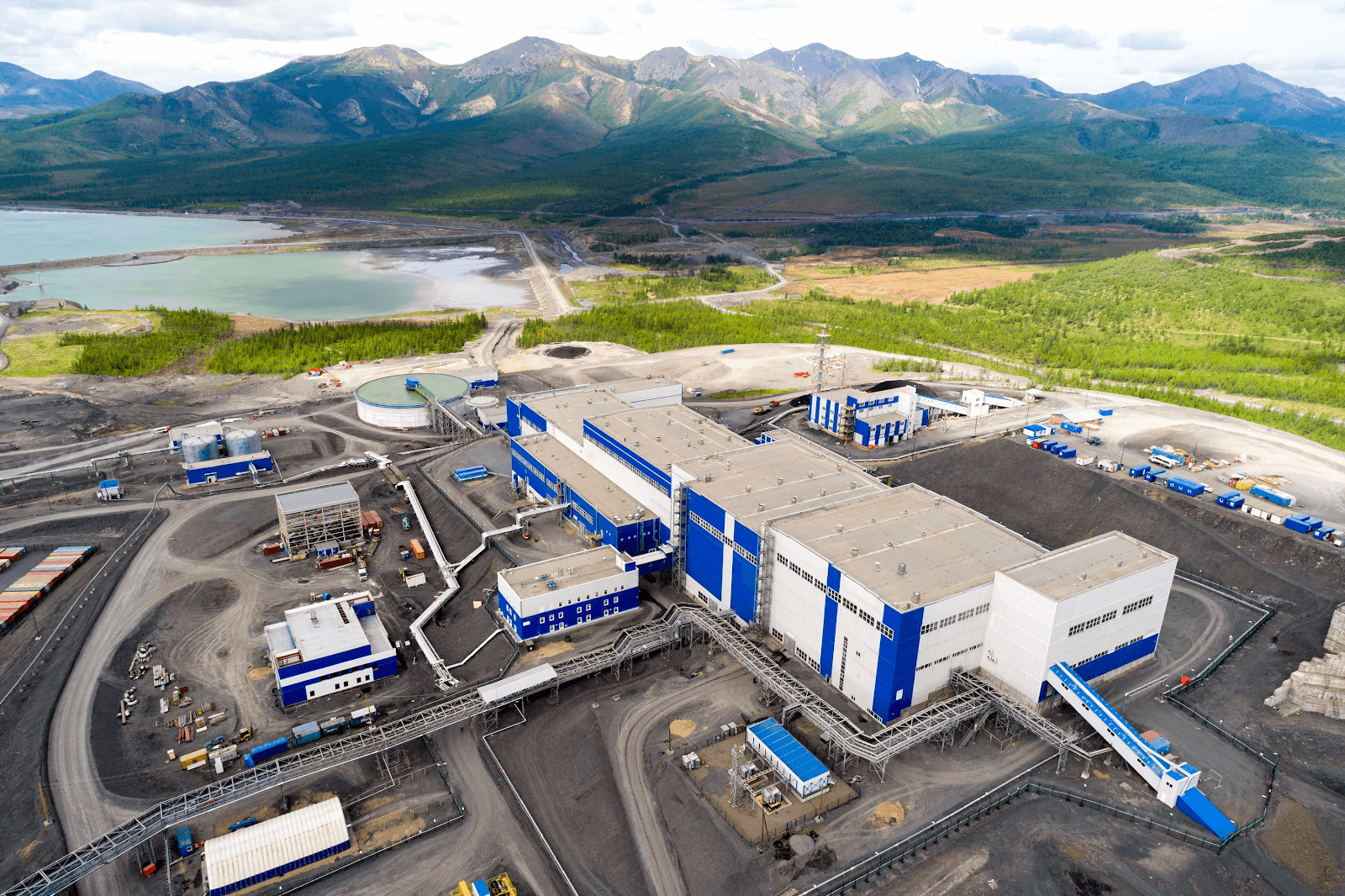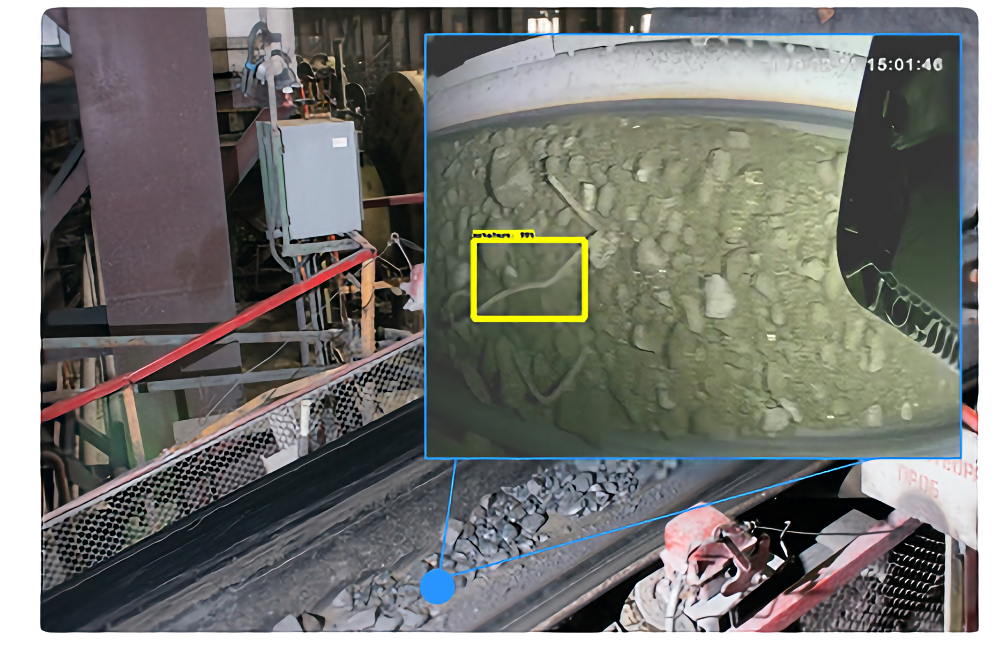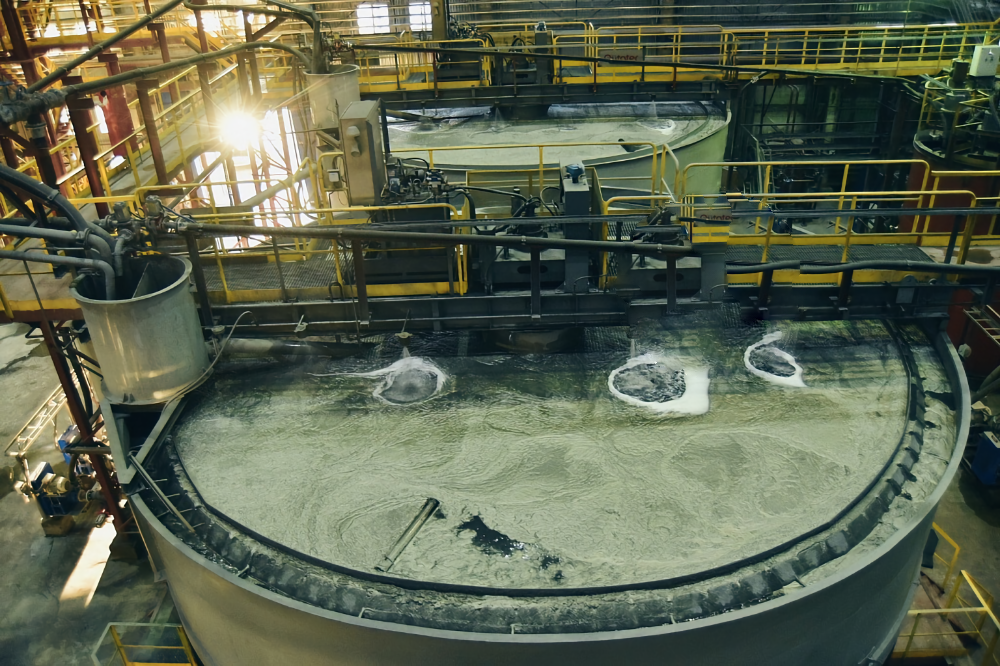
Factory dispatcher's workplace An
enrichment plant is a mining enterprise for the primary processing of solid minerals in order to obtain technically valuable products suitable for industrial use.
The variety of technological processes taking place in factories, such as crushing, grinding, screening, classification, flotation, cyanidation, sorption, neutralization, desorption, electrolysis and many others, leaves a wide field not only for standard automation, but also for the application of technical vision and machine learning. ... Under the cut - a detailed description and many large and beautiful photos.

A bird's-eye view of the
factory You can write a separate textbook about each process in factories, but I propose to dwell on the key points of the work of any enrichment enterprise.
Measurement of the grain size distribution of the supplied ore
In open-pit mining (sometimes closed mining is also known as underground mining), the size of the pieces of rock mass can reach up to 1.5 m in diameter. It is clear that it is useless to do anything with such boulders to extract minerals from them, so the first step is to prepare the crushed material.
So, almost any factory starts with an ore preparation department. At this stage, the ore goes through the stage of crushing and grinding to the fractions acceptable by the technological process.
youtu.be/itq6wBZND5k

At the current stage, systems are already being actively used to control the ore grain size composition after each stage of crushing and grinding. The task is extremely important, since the stage of ore preparation is the most energy-consuming process, and stopping due to backfilling (material jam) is fraught with many hours of downtime for literally the entire factory.
Machine vision algorithms, coupled with machine learning, recognize large inclusions in the ore stream that can pose a danger to the process flow. After detecting and classifying large objects, the algorithm can generate either informative signals with photo and video recording, or control signals, then the entire conveyor stops.

Visualization of the ore grain size determination process
Monitoring the integrity of the conveyor belt
Gravity and classification are common technological processes, as a result of which ore is separated by size or composition into different streams. These processes are based on the use of gravity, in which minerals are separated from waste rock due to the difference in their density and particle size.
Conveyors are directly involved in moving the working material from compartment to compartment. Generally speaking, conveyors are not the most reliable equipment to use. However, recent trends in technology and new conveyor equipment show that conveyor systems can be very efficient in mining operations with proper handling and maintenance.

Conveyor belt defect
To solve the problem of controlling the integrity of tapes, various approaches are used: from simple ones based on radio signals to trainable ML-systems using machine vision. Algorithms are trained to detect and classify local tape web defects, tears, cuts and displacements in the video stream.
Detection of ore contaminating bodies
As we found out in the first part of the article, an important and very urgent problem of the mining industry is the protection of expensive production equipment from unbreakable metal bodies - excavator teeth, lining fragments and other strong elements, which, getting into the crushing equipment along with ore, will certainly disable it. ...

Control unit
To solve this problem, various solutions are used: from computer vision on the ore flow to specialized software and mathematical processing of recorded signals after electromagnetic irradiation of the transported material.
The operation of such hardware and software systems is based on the use of a software classifier, with the help of which objects on the tape in the video stream are identified and separated. If the camera used for monitoring looks strictly from above, then classifiers are usually used to detect foreign objects. In the process of developing the method, ML-specialists train the classifier on historical data depicting the standard ore flow and the polluted one. The algorithm using data from the classifier in detection provides more accurate results.
In any case, the probability of false alarms remains, since pieces of rock of the most bizarre shape can always appear in the frame, however, it decreases with additional training of the model. The highest detection and classification accuracy is achieved by including data from metal detectors and radio sensors into the algorithm.

Foreign object on the conveyor belt
Classification of diamonds by color and shape
Alrosa's enterprises have successfully implemented a project for the classification of diamonds by color and shape based on ML and CV algorithms.
Machine vision cameras capture a diamond as it moves in free fall. The classification is carried out on the basis of models created using machine learning methods and video analytics algorithms developed specifically for this task. The sorting speed is up to 20 diamonds per second using pneumatics.

Measurement of flotation quality and speed
Flotation (from flotter - to float) is one of the methods of mineral processing, based on the difference in the ability of minerals to stay at the interface and due to the difference in specific surface energies.
In simple terms, after the ore has been ground into powder, it is mixed with water and special reagents, after which a strong stream of air is passed through the mixture. During this process, bubbles form, on the surface of which some materials are held and others precipitate.

Close-up flotation
Flotation is a very common production process in the mining industry. The size of the bubbles, the rate of foam formation and its removal are the most important characteristics that determine the quality of the extraction of a mineral. The material obtained as a result of flotation is called flotation concentrate, and the separated components are called flotation tailings.
How can foam be monitored? Using computer vision, of course. Bubbles, their speed and direction of movement, are fairly easy to recognize and measure using machine learning algorithms.
A stereo camera directed perpendicular to the surface of the foam flow allows you to determine the current height of the bubble layer. Algorithms that compare two or more adjacent frames make it possible to determine the direction of the flow and its speed. CV-algorithms, applying filters and highlighting the outlines of bubbles, allow you to determine their size and build histograms, which can be used to describe the quality of the process.

Industrial scale flotation process
Control of hazardous areas and availability of PPE
The level of industrial safety is the most important indicator at all modern enterprises. At hazardous facilities such as processing plants, safety is monitored especially carefully. Detailed and comprehensive statistics are kept on all incidents, and all managers have mandatory KPIs related to personnel safety.
Of course, modern machine vision-based hazardous area controls have not been spared by the mining industry either. Not only the presence of personnel in the danger zone is monitored, but also the availability of all necessary personal protective equipment (PPE): helmets, goggles, masks, gloves.

Video control of the availability of PPE
Control of loading and unloading operations
One of the most dangerous types of work in any production is loading and unloading work. But here, too, there was an application for computer vision, which allows you to notify the operator of a potential danger and thereby reduces the likelihood of an emergency.
The camera, mounted on the crane boom, is directed perpendicularly downward. Machine vision algorithms detect people and track them. Dangerous ("red") zones are the zone under the boom and the zone in the direction of the load. When a person enters the "red" zone, the algorithm signals the crane operator to stop work. In addition, there is a side camera that determines the position of the load relative to the horizon and the correctness of its fastening to the cables. In the event of a dangerous roll, a signal is given to the operator to stop work.

Loading control process
Smart advisors to technologists
Recently, systems are gaining popularity, which help operators and dispatchers to monitor the parameters of technological processes and give advice on changing the operating modes of equipment or on changing the target parameter settings in the process control system.
Today, modest attempts at industrial implementation of smart advisors are limited to single implementations and do not have wide expertise in the work of factories. The task for the near future is to launch smart factories.
Afterword
The article contains far from all machine learning and computer vision systems that are currently used at processing plants. High potential and a wide range of tasks to be solved determine the rapid pace of their development and implementation.
We can say with confidence that ML and CV systems have confidently entered the industry, as once happened with standard automation, and the limitations of the implementation of such technologies are largely due to the lack of qualified specialists, who are being hunted by large companies.

- Machine Learning Course
- Advanced Course "Machine Learning Pro + Deep Learning"
More courses
- Data Science
- Data Analyst
- «Python -»
- « Machine Learning Data Science»
- Unity
- JavaScript
- -
- Java-
- C++
- DevOps
- iOS-
- Android-
Recommended articles
- How Much Data Scientist Earns: An Overview of Salaries and Jobs in 2020
- How Much Data Analyst Earns: An Overview of Salaries and Jobs in 2020
- Data Scientist -
- 450
- Machine Learning 5 9
- Machine Learning Computer Vision
- Machine Learning Computer Vision